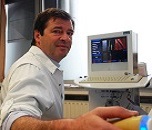About Conference
Conference Series LLC Ltd invites you to attend 8th International Conference on Hepatology (Hepatology 2022) to be held in Berlin, Germany during September 27-28, 2022. The conference highlights the theme “Recent Advancements in the field of Hepatology’’
Hepatology 2022 is a best platform with its well organized scientific program to the audience which includes symposiums, workshops, keynote lectures, plenary talks, panel discussions and poster sessions on latest research and technological developments in the arena as well as therapeutic aspects. The conference invites Hepatologists, Gastroenterologists, Internists, Physicians, Microbiologists, Virologists, Pathologists, Oncologists, Surgeons, Toxicologists, Researchers, Students, Business delegates and Young researchers across the globe.
Conference Series organizes 300+ International Conferences Every Year across USA, Europe & Asia with support from 1000 more scientific Societies and publishes 400+ Open Access Journals which contains over 30000 eminent personalities, reputed scientists as editorial board members.
Scope of the Conference
Hepatology 2022 provides a great platform by gathering eminent professors, Researchers, Students and delegates to exchange new ideas. The conference will cover a wide range of topics and allow participants to discuss about the management of liver diseases. Hepatology 2022 conference consists of keynote and plenary lectures, special sessions (Workshop and Symposium), Young Researcher Forum and Poster presentations. Best poster presenters will be judged and awarded during the conference. To encourage broad participation from all over the world Conference Series Ltd is offering reduced registration fee for students.
Conference Opportunities
For Researchers and Faculty Members:
-
Speaker Presentations
-
Poster Display
-
Symposium hosting (4-5 member team)
-
Workshop organizing
For Universities, Associations & Societies:
-
Association Partnering
-
Collaboration proposals
-
Academic Partnering
-
Group Participation
For Students and Research Scholars:
-
Poster Competition (Winner will get Best Poster Award)
-
Young Researcher Forum (YRF Award to the best presenter)
-
Student Attendee
-
Group registrations
For Business Delegates:
-
Speaker Presentations
-
Symposium hosting
-
Book Launch event
Scientific Sessions
Liver and Biliary:
The liver is the largest gland in the body, and conducts a myriad of vital metabolic and excretory functions. In addition, by virtue of its circulatory relationship to the absorptive surface of the gastrointestinal tract, the liver is the initial site where ingested nutrients, and other substances entering via the gastrointestinal tract, such as drugs and bacterial metabolites, are processed by the body. Thus, the liver is a gate-keeper that can process useful substances while detoxifying orally absorbed substances that are potentially harmful, such as toxic xenobiotics.
-
Multidisciplinary treatment of liver malignancies
-
Minimally invasive liver surgery
-
Surgical techniques
-
Liver tumor
-
Cholangicarcinoma
-
GB Cancer
Liver Diseases
Liver is responsible for many critical functions within the body. It helps your body digest food, store energy, and remove poisons. If it becomes diseased or injured, the loss of those functions can cause significant damage to the body. There are over 100 different forms of liver disease that affect men, women and children. These diseases include cirrhosis, alcohol abuse, hepatitis A, B, C, D, and E, Epstein Barr virus (infectious mononucleosis), non-alcoholic fatty liver disease and iron overload (hemochromatosis). The main symptoms of liver imbalance include weakness and fatigue, weight loss, nausea, vomiting, and yellow discoloration of the skin (jaundice).
-
Hepatic encephalopathy
-
Fatty liver Disease
-
Primary Biliary Cirrhosis
-
Nonalcoholic Steatohepatitis
-
Acute and Chronic Liver Disease
-
Fulminant Liver failure
-
Liver Cirrhosis
-
Hepatotoxicity
-
Liver stiffness
-
Liver Pathology
-
Liver Damage
-
Liver Inflammation
-
Liver regeneration
-
Hemochromatosis
-
Liver infection
-
Ascites
Liver Diseases Diagnosis
Screening for Liver diseases has been advocated with the intention of intervening to halt its progression. Abnormal liver tests are those that measure synthesis of proteins made by the liver (albumin, clotting factors) or the liver's capacity to metabolize drugs. The impact of diagnosis of hepatitis C virus on quality of life is worse in patients aware of their viral status compared with individuals unaware of their viral status.
-
Liver Tests
-
Transient elastography
-
Shear Wave Elastography
-
Fibroscan
-
Liver imaging
Herbal Medicines for Liver diseases
The use of herbal products as medications has its origin thousands of years ago. In Western countries, herbal medicine products are gaining increasing popularity. Some herbal products may potentially benefit people with liver disease.
-
Herbal medicine induced Liver injury
-
Dietary supplements induced liver injury
-
Chinese medicine for liver disease
Pregnancy and Liver Diseases
Several disorders contribute to liver disease in pregnancy such as acute fatty liver of pregnancy (AFLP) and intrahepatic cholestasis of pregnancy (IHCP), hyperemesis gravidarum and hemolysis and elevated liver enzymes and low platelets (HELLP) syndrome. Liver disease such as acute viral hepatitis can occur in pregnancy and pregnancy may occur in a patient with underlying chronic liver disease including patients with cirrhosis and portal hypertension, and patients who have undergone liver transplantation.
-
Hepatitis during pregnancy
-
Acute Fatty liver of pregnancy
-
Intrahepatic cholestasis of pregnancy
Hepatitis C
Hepatitis C is a devastating liver disease caused by Hepatitis C virus (HCV) which causes acute and chronic infection. In some cases, chronic hepatitis often leads to liver cancer or cirrhosis. Chronic Hepatitis causes liver damage and fibrosis, hepatomegaly, hepatocellular carcinoma.
HCV is a bloodborne virus transmitted due intravenous drug use, unsterilized medical equipment, from mother to baby during birth, sexual contact with infected person. HCV virus has no vaccine, therefore prevention of virus prevalence is recommended.
Hepatitis B
Hepatitis B is a liver infection caused by the Hepatitis B virus (HBV). HBV is transmitted through activities that involve percutaneous or mucosal contact with infectious blood or body fluids. HBV can survive outside the body at least 7 days and still be capable of causing infection. The best way to prevent hepatitis B is by getting the hepatitis B vaccine. The pathogenesis and clinical manifestations of hepatitis B are due to the interaction of the virus and the host immune system, which lead to liver injury and potentially cirrhosis and hepatocellular carcinoma. Patients can have either an acute symptomatic disease or an asymptomatic disease.
-
Hepatitis B: Management strategies
-
Novel Therapies for HBV
-
Prevention, Care and for Hepatitis B Infection
Non-Viral Hepatitis
Non-viral hepatitis is an inflammation of the liver caused by toxins, drugs, or other harmful chemicals that destroy cells in the liver (Hepatocytes). Acute hepatitis damages hepatocytes, make up 70-85% of the total mass of the liver. The disease is a growing problem due to the increasing number of dietary supplements with liver side effects. If hepatitis leads to liver failure, a liver transplant is the only treatment option that can improve survival.
HCV/HIV Co-infection
Overall, about one-third of people with HIV also have hepatitis C. Hepatitis C virus (HCV) can be transmitted in some of the same ways as HIV and hepatitis B. HIV can worsen hepatitis C. HIV not only increase the risk of liver damage, but it can also speed up the onset of liver damage following infection. People who are coinfected with HIV and HCV should work closely with health care providers in order to monitor and treat both conditions.
Management of HCV in HIV-Coinfected Individuals
Hepatitis Vaccination
The best way to prevent hepatitis is by getting the hepatitis vaccines. Vaccination is safe and effective and it is recommended for all. Efforts to develop a hepatitis C vaccine started more than 20 years ago, when the hepatitis C virus was identified. The hepatitis C virus is more variable than are the viruses that cause hepatitis A and hepatitis B. Hepatitis C virus occurs in at least six genetically distinct forms with 50 subtypes. A global vaccine would have to protect against all these variants of the virus.
Liver Transplantation and Surgery
Liver transplantation surgery technique to replace a diseased or injured liver with a healthy liver delivered from a healthy person. The liver is involved in various metabolic functioning including metabolism of drugs and toxins, removing degradation products of normal body metabolism (for example clearance of ammonia and bilirubin from the blood), and synthesis of many important proteins and enzymes (such as factors necessary for blood to clot). Doctors or surgeons suggest liver transplant surgery to the patients who suffer from severe Drug-induced liver injury (DILI) or Chronic liver failure. This surgery carries a risk of other complications including infection, liver inflammation, blood clots, liver rejection, and memory thinking problems.
Pancreas
Pancreas being a very close part to the liver helps to regulate sugar level in the body and also helps in many other functions. It is this part of the body that extremely helps in regulation of glucose level in the body.
Gastroenterology
Gastroenterology is the study of detailed understanding of the physiology of the gastrointestinal organs including the movement of material through the stomach and intestine the digestion and absorption of nutrients into the body, removal of waste from the system, and the function of the liver as a digestive organ.
Market Analysis
Hepatology, traditionally considered a sub-specialty of gastroenterology, is the branch of internal medicine that incorporates the study of liver, biliary tree, gallbladder and pancreas as well as management of disease and disorders associated with them. Some of the cases in hepatology include jaundice, liver cancer, liver transplantation, drug overdose, bilary infection bleeding, pancreatitis, GIT bleeding, etc. Although there is a reduction in deaths due to gallstone disease and gallbladder cancer, liver-related mortality has remained relatively stable over the last 30 years. Hepatology represents a growing problem for the international health care systems and first of all, for the patients. Alcoholism and the alcoholic liver disease resulting from it, is a remarkable factor in some Asian countries and in most industrial countries but here the rapidly growing segment in hepatology is NASH (non-alcoholic steatohepatitis). NASH is the major form of NAFLD, the major cause of cryptogenic liver cirrhosis. Nearly 10% of the US Americans (25 Million) suffer with liver-related diseases every year. Chronic liver diseases are the major problem. An estimated 30% of the world's overall population (2 billion) has been infected with hepatitis B virus and more than 350 million people are Inflicted by chronic HBV. About 170 million people have hepatitis C. Global Liver Disease Treatment Market is foreseen to collect $19,536 million by 2022, registering a CAGR of 11.72% during the forecast period 2016 - 2022. Additionally, according to the reports of American Cancer Society, liver cancer rates raises 2.7% each year driving the growth of market.
Scope
This conference unleashes the novel ideas and advanced diagnostic approaches towards the diseases associated to liver. The recent advancements and knowledge about liver and pancreatic diseases and the treatment strategies will be shared. The participant companies can gain the networks and promote their upcoming strategies by exhibitting their products at the conference
The major intention of this conference is to bring together the Hepatologists, Gastroenterologists, Pathologists, Directors/CEO & Industry experts, Professors, Scientists, Researchers and Students of Hepatology in all areas of Liver diseases & Therapeutics and to provide an international forum for the exposure and dissemination of original research results, novel ideas and practical development experiences related to the research.









